If it's time to replace the ductwork for your cooling system, you need to think about which material you'll use to ensure its quality and durability. If you're choosing between duct board and sheet metal, you've come to the right page. We've done the research for you so that you'll know which one's the best choice.
When choosing between sheet metal and duct board, sheet metal is better. It may be more expensive, but you can depend on its performance and durability for a long time. A duct board loses its energy efficiency as its particles erode over time.
Continue reading to know more about their properties as well as the pros and cons of using each material for your AC ducts. This article also talks about rigid and flexible duct types and signs that it's time to have your ductwork replaced. Let's get down to business!
What Is The Best Material For AC Ductwork?
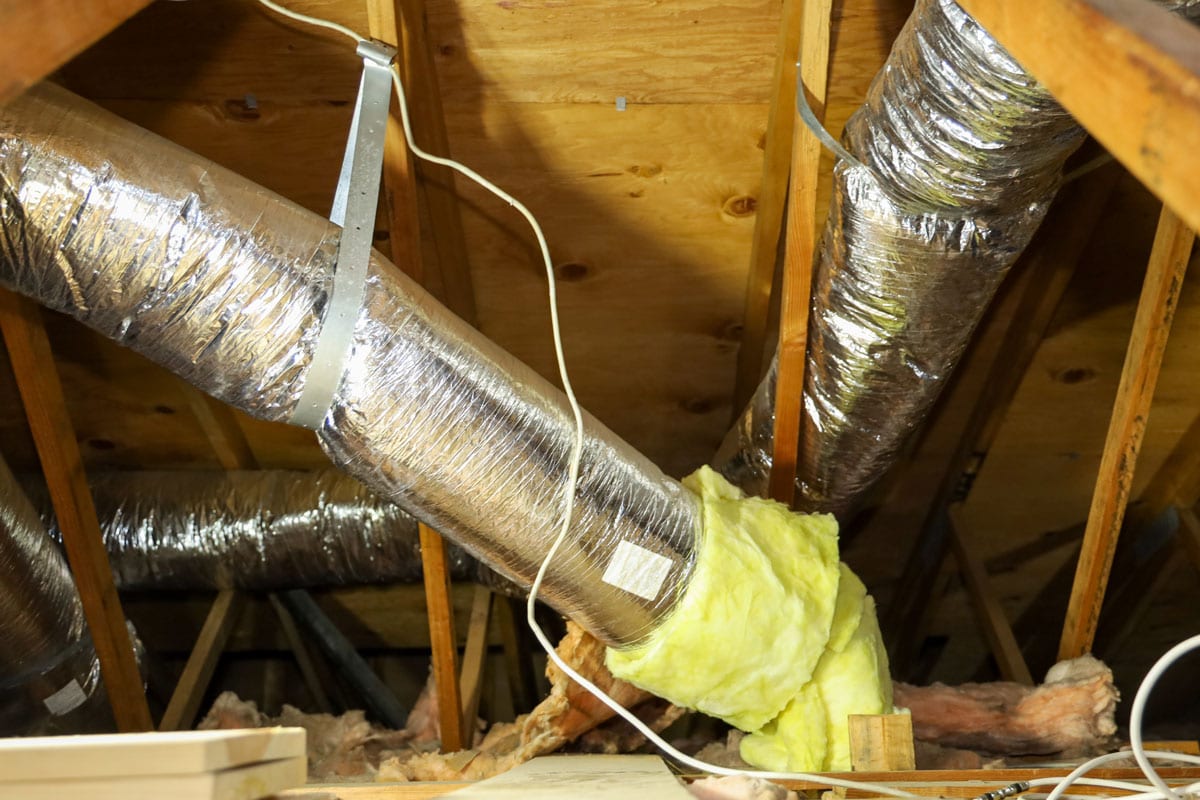
Your AC ducts may be working behind the scenes, but they are equally important in making sure that your house stays cool despite the hot weather outside.
They are the channels where cold air passes through so that it can be distributed to different parts of the house. They also help regulate indoor temperature so that it stays at a comfortable level all the time.
As such, you need to choose the best quality for your AC ductwork. It can be made of different materials, and we'll focus on two of them this time: duct board and sheet metal.
Like all other materials, these two have their own set of advantages and disadvantages. You need to find out about them so that you can make the right decision when choosing the best material for your AC ductwork.
What Are The Advantages And Disadvantages Of Sheet Metal?
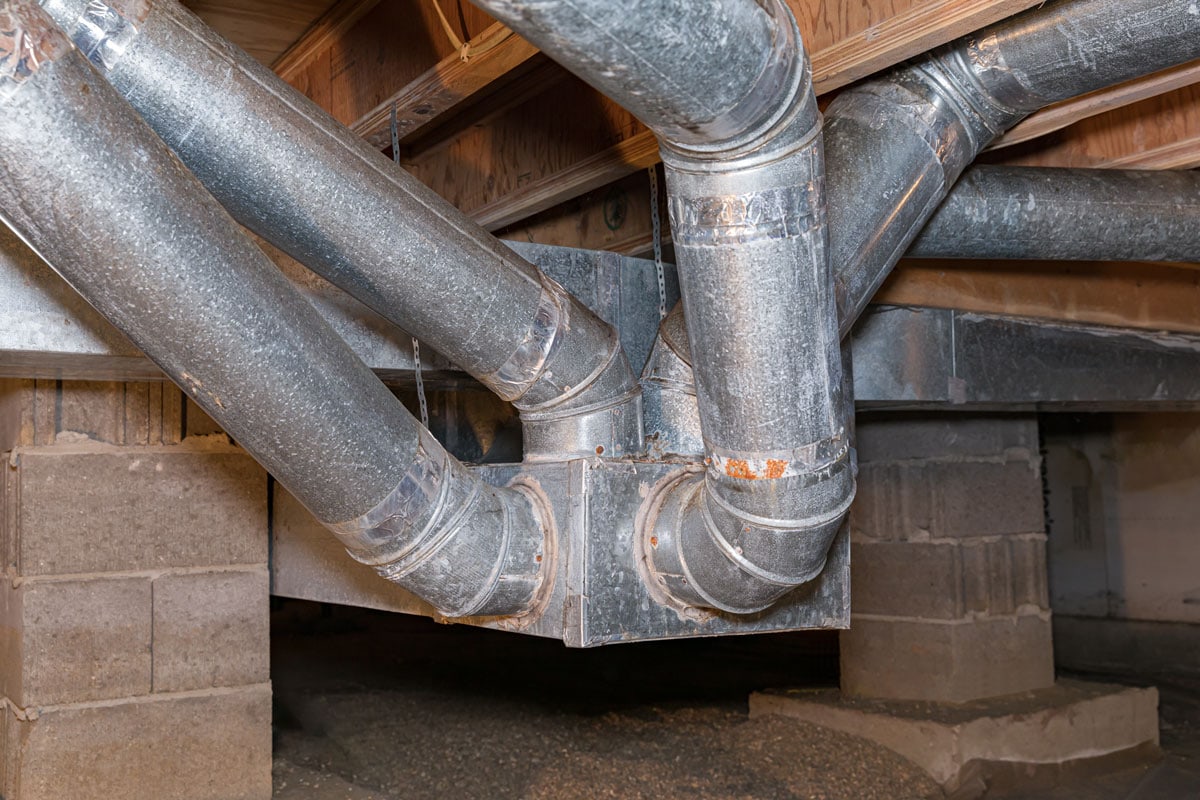
Sheet metal is the most common material used for AC ductwork. It can be made of aluminum or galvanized steel that is shaped into round or square ducts.
Pros
Sheet metal is hard and thick with a smooth surface. When installed and sealed properly, it offers reliable protection against dirt, dust, and other unwanted particles that threaten to contaminate your indoor air quality.
It can also resist corrosion so you can expect this material to last long. Aside from its durability, it is also easy to clean and maintain so that it stays in good condition all the time.
Cons
As fabrication requires special machinery, you can expect sheet metal ducts to be quite expensive. Precise measurement is needed so that it'll fit in its position.
Cutting and shaping are done by the manufacturer and the sheet metal duct will be transported and carried to your home. This makes installation quite challenging.
Sheet metal also makes sounds when there are vibrations, so you'll have to deal with noise issues whenever your AC is running.
This ductwork also requires insulation either on the interior or exterior side to make it more energy efficient. Insulation will also help prevent condensation, which is a common cause of moisture problems in your ductwork.
It is better to use exterior insulation so as not to contaminate the indoor air with loose particles from the insulating material.
However, understand that the additional insulation would mean extra costs for the material and labor for the installation.
What Are The Advantages And Disadvantages Of Duct Boards?
A duct board is made up of numerous fiberglass strands bound together by resin.
Pros
Its fabrication process is said to be less meticulous and much faster than sheet metal which is why it is offered at a more affordable price.
It has a semi-rigid textured surface and its top part is covered with a foil barrier that enhances its insulation properties. Because of this, duct boards can retain the coldness in the air much longer.
It is naturally more energy efficient than sheet metal and doesn't require additional insulation. This means that you get to save on material and labor costs.
The duct board also absorbs sound so you don't have to deal with noise issues when you're using your AC.
Cons
The drawback of using this material is that you'll have to clean it harder since dirt settles on the crevices on its surface. Its installation also requires special tools and can get messy.
Some experts are also concerned about the durability of ductwork made with fiberglass duct boards. The duct board doesn't do well when in constant contact with water. This can cause mold and mildew growth that can affect the quality of indoor air.
They also say that its fibers can erode over time and loosen up. Fiberglass particles can be mixed with your indoor air, contaminating its quality.
Aside from questions about their longevity, this also raises concerns about duct boards' energy efficiency in the long run. If some parts erode, they'll let air pass through which means less cold air will make it to the end of the ducts into the vents.
The Verdict
In the battle between sheet metal and duct board, the former is the better choice. Although the upfront and installation costs of sheet metal are more expensive, the money spent is well worth it when it comes to durability and performance.
The duct board ductwork doesn't maintain its energy efficiency and may require frequent repair and maintenance.
What Are The Signs That You Should Replace Your Ductwork?
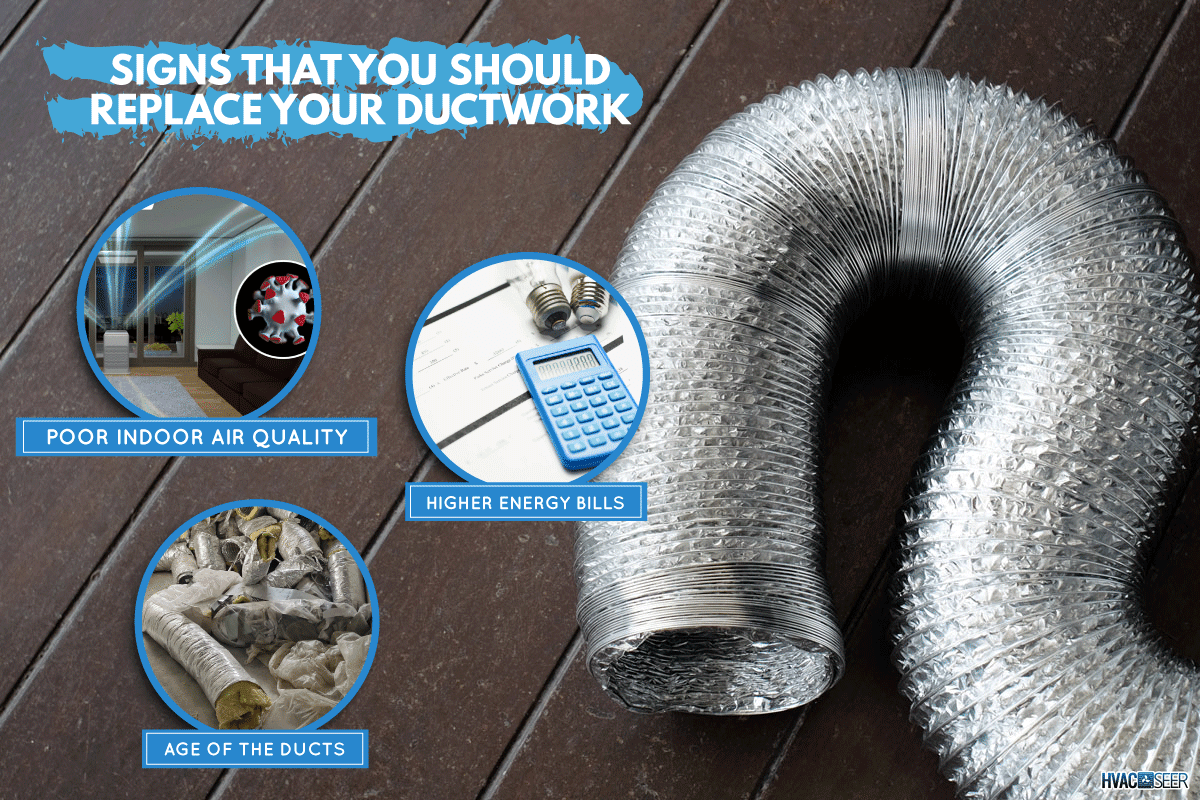
Ductwork has an expiration date. It is expected to last between 10 and 15 years depending on the materials used, installation, age, air quality, and other external factors.
Here are the signs that you need to have your ductwork replaced.
Poor Indoor Air Quality

Over time, there'll be holes and gaps in your ductwork. When this happens, they can allow dirt, dust, and other air contaminants to enter and get mixed with the cool air that's being distributed to different parts of the house.
This means you breathe contaminated air which can lead to frequent allergy attacks, headaches, and respiratory issues.
Higher Energy Bills

When your ductwork is damaged, your home's HVAC system has to work extra hard to provide you with a comfortable level of indoor temperature. Cool air is lost while it is being directed to different parts of your home. This translates to higher electric bills by the end of the month.
Age
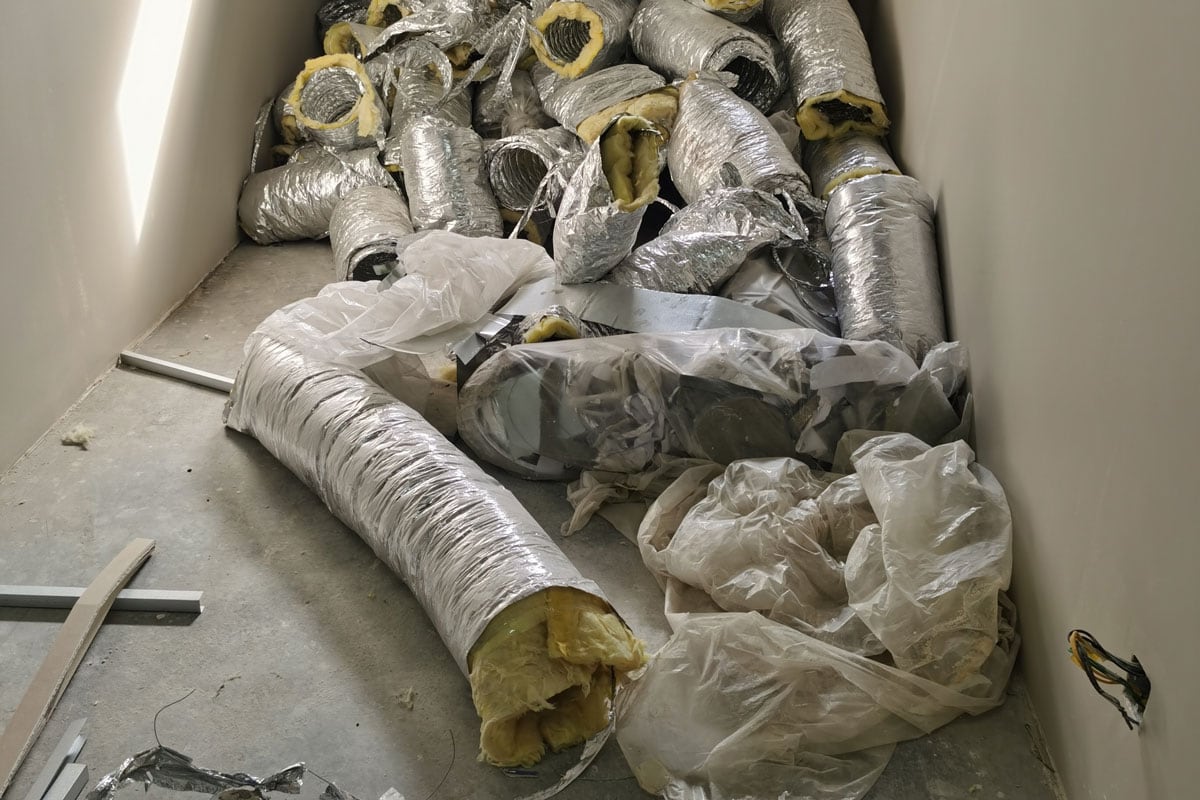
Time can wear out your ductwork and cause it to break down. The seals will give in and some portions will collapse.
There's a need for frequent repair to prevent drafts and pests from getting inside. But there will come a time when the repairs aren't worth it anymore and it's more practical to have the ductwork replaced instead.
These are just some of the signs that'll tell you it's time to have your HVAC ductwork replaced so that you can have ductwork that works efficiently and effectively.
Is Rigid Or Flexible Ductwork Better?
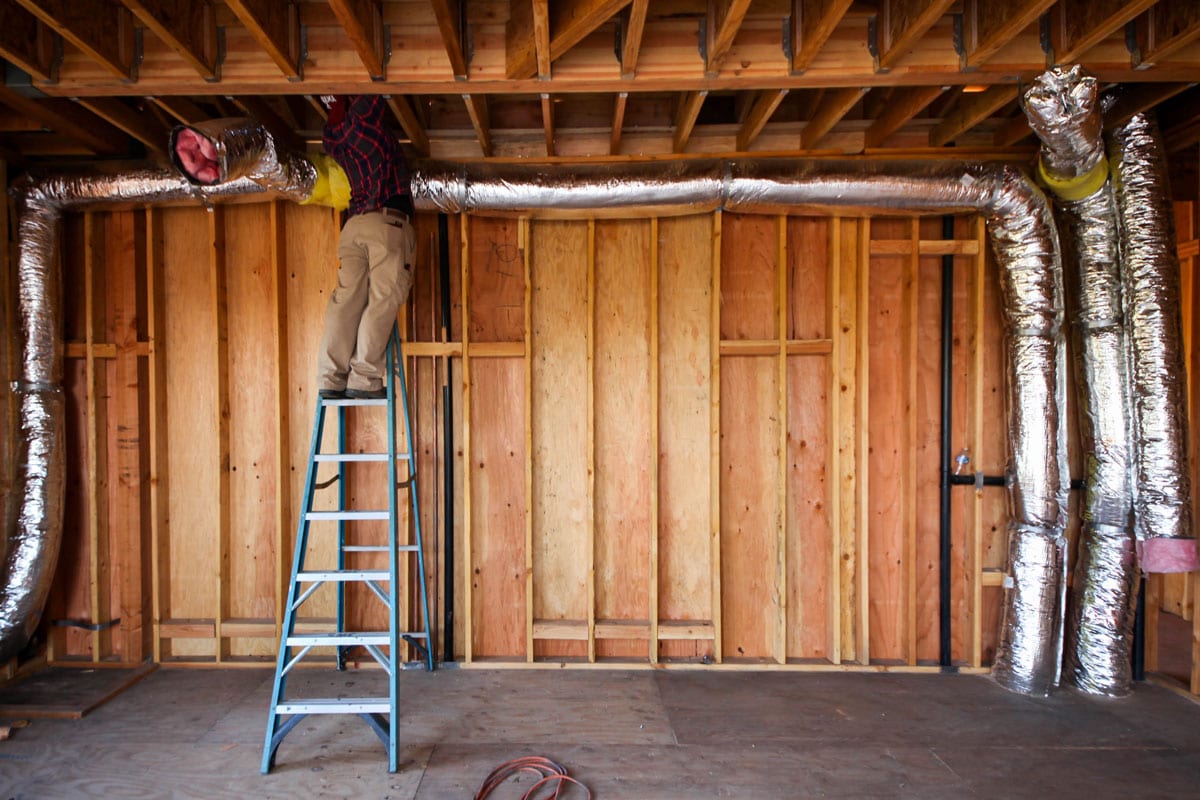
In your search for the best ducting material, you will also encounter different types of ducts. This will lead you to wonder which type of ductwork you should have in your home.
Rigid ducts are made of metal while flexible ducts can be made of silicone, rubber, or plastic. As their names suggest, rigid ducts are stiff while flexible ducts can be bent to conform to the shape that you need. But their differences extend beyond the materials they are made of.
Durability
Metal is a very strong, long-lasting material. It can stand up well to various weather conditions and external factors. You just cannot expect the same level of strength from flexible ducts.
HVAC Design
This is a crucial determining factor in choosing the right duct type for you.
Rigid ducts need to be connected directly to the HVAC system. Flexible ducts don't require this. They can be installed anywhere within the ductwork.
You can think of your ducts as a tree. The rigid ducts are the main branch while the flexible ducts are the sub-branches that go to different directions where cool or hot air needs to be distributed.
Installation
As can be expected, flexible ducts are easier to install since they can be bent to conform to the shape and direction that you want them to go. Meanwhile, you need to provide exact measurements to your service provider so that they can cut and prepare the metal sheets needed for your ductwork.
Air Resistance
Duct type impacts how air flows from your HVAC system to the different parts of your house.
Rigid ducts offer minimal air resistance. Air can pass through effortlessly through their interior's smooth and straight surface so your HVAC doesn't need to work harder to provide your home with a comfortable indoor temperature.
Flexible ducts can be bent to follow the direction you need them to go to, and sometimes these configurations can make it hard for air to flow through them toward the different vents in your house. This is why they say that flexible ducts have more air resistance than rigid ducts.
There you go! Consider the duct's durability, suitability to your HVAC design, installation requirements, and air resistance before choosing the right duct type for your home. Of course, you can always use both in different parts of your ductwork so that you'll have a well-functioning HVAC system.
Final Thoughts
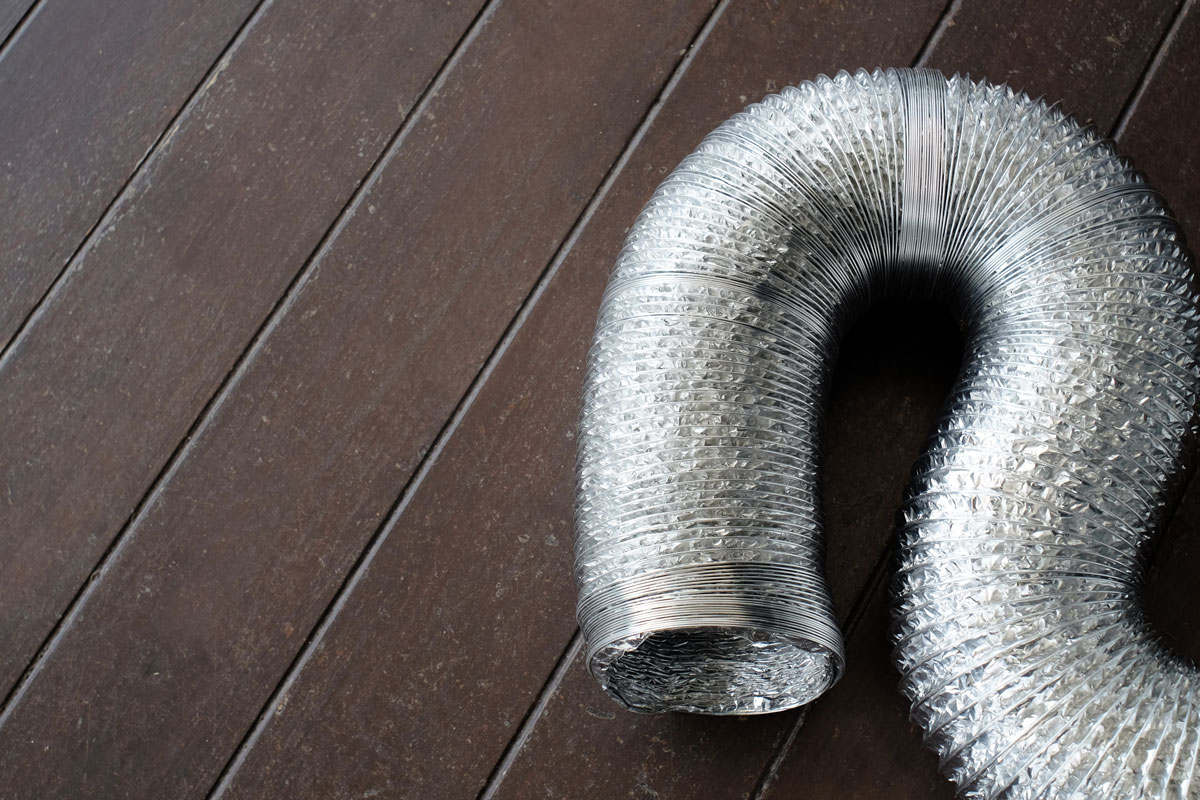
Choose ducting material that you can rely on for a long time. Sheet metal is a worthy investment so that cold air can be distributed to different parts of your house efficiently.
For more resources about your HVAC ducts, you may read the following posts:
